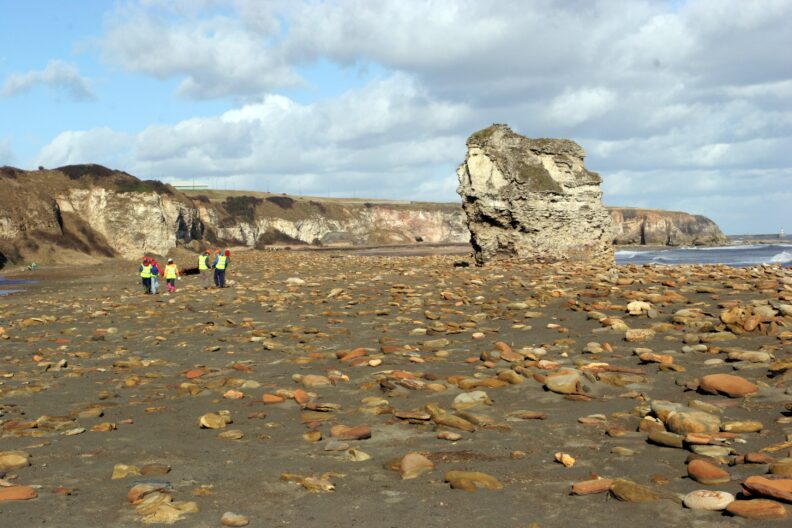Collaborative Innovation Grants (CIGs)
Collaborative Innovation Grants (CIGs)
Each year, DCAD fund a number of projects through its Collaborative Innovation Grants. This grant scheme is designed to support staff across Durham University to develop innovative and inclusive learning and teaching approaches to enhance student learning and success, and to disseminate good practice across the institution and beyond.
More information on Collaborative Innovation Grants (Durham University internal access only) can be found here.
This years’ projects are listed below.

Using Artificial Intelligence (AI) to enhance critical thinking: are students ready for this?
Mathilde Roger, Helen Thompson, Gillian Campling (Biosciences), Ross Parker and Paul Finley (DCAD)
The purpose of this project is to explore how an AI-powered language model can be used to facilitate inner feedback by comparison and develop student’s critical thinking skills. Student expectations and experiences of using Generative AI will be evaluated as part of the project. This project will encourage and support academics from the Biosciences department to use AI tool for Teaching, Learning and Assessment (TLA). Academics will be encouraged to use AI to generate exemplars and develop activities that explicitly promote self-feedback by comparison. It will also assess students experience and expectation in using AI tools for TLA in HE at the end of the academic year via survey. The aim is then to develop resources to facilitate the use of AI within the institution and further: guidance and support to use it as academic and as a student.

Making fieldwork accessible with 3-D outcrop models generated from drone collected data
Chris Savile (Earth Sciences) and Ross Parker (DCAD)
The purpose of this study is to explore the use of drones and 3-D modelling technology as a way of creating more inclusive field trip materials for Earth Sciences students. This will be used to support a virtual pathway option through the field work module GEOL1051 and enhance the accessibility of Field work in the other modules that use fieldwork, while being not exclusively fieldwork based.
The project will develop digital 3-D models of field trip sites used in Earth Sciences and evaluate students’ experiences of using these models, using a combination of surveys and focus groups. This will lead to the creation of guides to using the 3D models for both staff and students.

Understanding students experiences and attitudes towards Generative AI from an EDI perspective : The potential benefits for Teaching and Learning.
Trevor James (Psychology) and Rachelle O’Brien & Candace Nolan-Grant (DCAD)
The purpose of this project is to argue that to develop innovative and inclusive teaching and assessment using generative AI, we first need to take an inductive, ground-up approach, understanding how students use generative AI and how this relates to pedagogy. We further argue that to develop inclusive teaching and assessment using generative AI we need to understand how AI intersects with EDI and learning. For this reason, the project has a strong focus on the experiences of neurodiverse students, international students, and BME background students.
Through this project we aim to address the following research questions:
- What is the prevalence of AI use by students in Higher Education?
- What is the level of awareness in the student body towards generative AI and its functionality?
- Do students see AI as ‘cheating’ or ‘teaching’ and what is the general attitude towards AI in the student body?
- How do students currently use AI in their learning and does this vary between home students and international students?
- How does AI intersect with EDI; more specifically, do certain groups of students potentially benefit from AI more than others, e.g., neurodiverse students and BME students.
- How does AI interact and relate to well-established pedagogical variables related to learning and academic success, e.g., self-efficacy and student motivation (Zimmerman, 1995)

Making an Artificial Intelligence-powered chatbot for student support and personalised learning.
Arin Mizouri (Physics) and Ross Parker (DCAD)
The project aims to design a prototype chatbot that can assist in the instruction of a first-year physics module titled “Discovery Skills in Physics”. The course covers a wide array of topics, such as laboratory skills, programming, data analysis, scientific presentations, and scientific writing, all of which are critical for advancing past the first level of study. Given the broad subject matter and diverse student cohorts, it is a significant challenge for lecturers and laboratory demonstrators to promptly respond to student queries. This module involves 13 lectures presented by four different lecturers and weekly laboratory sessions. Feedback has revealed a desire for greater consistency in the lab support provided, given the varying levels of experience of the lab demonstrators.

How can ChatGPT support the development of target language writing-skills in Modern Foreign Languages in Higher Education?
Aziza Zaher (MLaC) and James Youdale (DCAD)
This study proposes to explore how Generative AI can support writing skills, feedback and academic advising through ‘assessment for learning’ (Boud, et al, 2010) activities in the MFL context, focusing particularly on skills development such as reflection, reasoning, critical thinking, prompt generation and digital skills. This study will seek to place a particular focus on the new knowledge that students generate when they compare their current knowledge and competence against reference information (Nicol & McCallum, 2021), with students completing prescribed tasks both with, and without, the use of Generative AI, and receiving both instructor-authored and Generative AI authored feedback.
